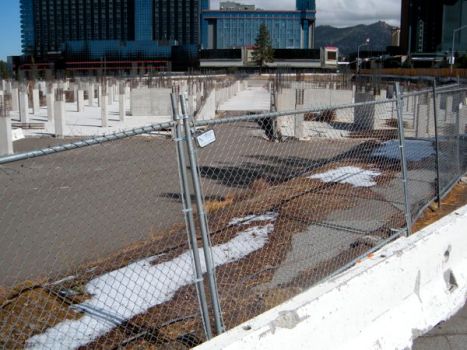The news about the proposed Boulder Bay Resort this past January helped to rekindle a continuing struggle that Tahoe is having. The balance that the Lake has to play in developing new areas of tourism and economic development in conjunction with environmental protection will continue for some time. Boulder bay is one such project that highlights the strong sides of opinions and also the possible solutions for the future. This project also shows how North Lake Tahoe is being targeted as a key battleground on the lake for development. Between this project and the recent shrinking of the highway along King’s Beach, it seems as though North Lake is making continual strides to challenge and change the ecological and environmental framework of Tahoe.
What is South Lake Tahoe doing amidst all this change? Stateline currently is pushing all of the casinos that have been there for the past 5o years. Yet, with the slowing economy it seems as though this could not prove to be a viable model. Recently, a local developer decided to tear out a huge amount of mom and pop shops along the stateline casino strip in South Lake. 
The idea he had in mind was to build a new state of the art convention center that would attract visitors with the same message the Vegas plays in many ways to the myriads of conventions held annually down south. Now this project is sitting in the middle of the stateline strip as a boarded up eye-sore. How Tahoe officials choose to develop this current structure beyond this current mess could be an interesting study in sustainable development. Depending on how this project goes, it could shed light on how surrounding casinos in South Lake could choose to develop as well. Should Casinos in South Lake be adopting more “green rated” building plans for the future? Now that Nevada is rethinking the structure of its own economy, should the Casinos be torn down or revamped with different economic goals aside from gaming? Is it even environmentally responsible for Tahoe to even begin to develop such huge projects in and around the Lake as Tahoe’s clarity and erosion control has become an even larger concern in recent years?
South Lake Tahoe’s network of concerned citizens interested in sustainable development has yet to sprout. It seems as though North Lake has a stronger base in concerned citizenry when it comes to develop. Hopefully, this blog can begin to serve as a sounding board and discussion hub for both sides of the lake. They could both learn something from each other at the least.
-Scott A. Gayer | tahoesprawl
Filed under: Uncategorized | Leave a comment »


